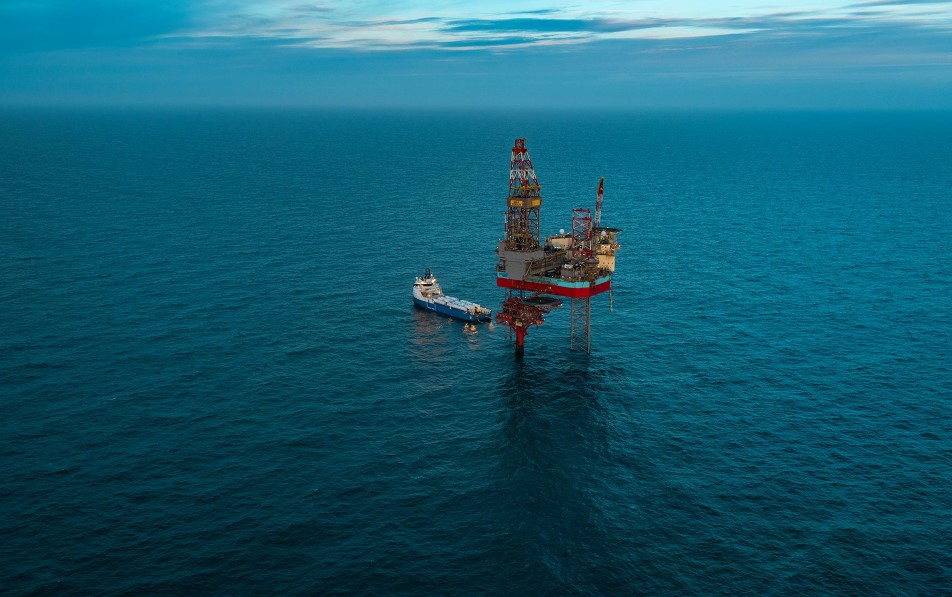
The Silent Revolution Beneath the Waves
The future of carbon storage is taking a dramatic turn offshore, where vast underwater reservoirs are becoming the next frontier for climate solutions. ExxonMobil has secured access to over 271,000-acres in Texas state waters; ideal for CO2 storage, marking the largest offshore carbon dioxide storage lease in U.S. history. This milestone represents more than just another industrial project—it signals a fundamental shift in how America approaches large-scale carbon capture and storage.
The Gulf of Mexico's immense geological potential is finally being unlocked for permanent carbon storage. The oil giant may capture and remove as much as 7.5 million metric tons of CO2 from its Baytown oil refinery, demonstrating the massive scale these offshore operations can achieve. These deep-sea storage sites offer something onshore projects simply cannot match: virtually unlimited space without competing land use concerns.
>> RELATED: Bayou Bend's Ambitious Carbon Storage Hub Could Reshape Industrial Decarbonization

North America's Underwater Advantage
Why the Gulf Coast Leads the Pack
The U.S. Gulf Coast has emerged as the undisputed leader in offshore carbon storage development. The region's unique combination of depleted oil and gas reservoirs, favorable geology, and existing infrastructure creates the perfect storm for carbon storage success. ExxonMobil leverages decades of offshore drilling expertise to transform former hydrocarbon sites into permanent carbon vaults.
The strategic advantages are compelling:
- Proven geological formations with established containment capabilities
- Existing pipeline infrastructure that can be repurposed for CO2 transport
- Regulatory familiarity with offshore operations from traditional energy sectors
- Minimal surface impact compared to onshore storage facilities
European Pioneers Light the Way
Europe's offshore carbon storage projects are providing the technical blueprint for North American expansion. Norway's Northern Lights project, operated by Equinor, demonstrates how offshore storage can operate at industrial scale with first deliveries expected in 2026. Denmark's Project Greensand showcases another successful model, proving that offshore storage isn't just theoretical—it's operational reality.
The Infrastructure Revolution
Building Tomorrow's Carbon Highways
The infrastructure requirements for offshore CO2 storage represent a fascinating engineering challenge. Subsea pipelines must transport captured carbon from industrial facilities to injection sites hundreds of feet below the seabed. Companies like SLB and Baker Hughes are developing specialized injection systems designed specifically for underwater carbon storage operations.
The technical complexity is staggering yet achievable:
- Subsea Pipeline Networks: High-pressure pipelines designed to transport CO2 in supercritical state
- Injection Well Systems: Specialized equipment for precise carbon placement in geological formations
- Monitoring Technologies: Advanced sensors ensuring storage integrity and environmental safety
- Platform Infrastructure: Offshore facilities coordinating the entire storage operation
Environmental Benefits Beyond Storage
Ocean-Friendly Carbon Solutions
Offshore CO2 storage offers unique environmental advantages that onshore alternatives cannot match. The deep-sea injection sites are typically located in geological formations far below marine ecosystems, minimizing environmental disruption. The absence of freshwater aquifer concerns eliminates one of the primary environmental objections to onshore storage.
Key Environmental Benefits:
- Permanent geological sequestration in stable rock formations
- Minimal surface ecosystem disruption compared to land-based facilities
- No freshwater contamination risk from storage operations
- Reduced transportation emissions with shorter pipeline distances
Safety Protocols for Deep-Sea Operations
The safety standards for offshore CO2 storage exceed those of traditional onshore operations. Multiple containment barriers, continuous monitoring systems, and emergency response protocols ensure environmental protection. The industry's decades of offshore oil and gas experience translate directly to carbon storage safety management.

>> In Other News: Hygreen Energy Enters Multi-Year Partnership to Bring Large-Scale Hydrogen Production Systems with PEM Electrolysis Stacks to Worldwide Markets
Investment Momentum Builds
Federal Incentives Drive Development
The federal 45Q tax credit provides crucial financial incentives for offshore carbon storage projects. This policy framework makes large-scale offshore storage economically viable while encouraging rapid industry expansion. The credit structure specifically benefits permanent geological storage, making offshore projects particularly attractive to investors.
Recent investment patterns show remarkable momentum:
- Multi-billion dollar commitments from major energy companies
- State government partnerships providing additional financial support
- Technology sector investment in monitoring and injection systems
- International collaboration leveraging global expertise
Industry Partnerships Accelerate Progress
The offshore carbon storage industry is witnessing unprecedented collaboration between traditional energy companies, technology providers, and government agencies.
“With our growing roster of customers ready to deploy CCS, we’ll be driving [substantial emissions reductions along the Gulf Coast](https://decarbonfuse.com/posts/linde-expanding-co2-capacity-in-the-u-s-gulf-coast) through a comprehensive solution that includes capture, transportation, and storage—capabilities that make us a clear leader.”
Regulatory Framework Evolution
Streamlined Permitting for Offshore Projects
The regulatory landscape for offshore CO2 storage is rapidly evolving to accommodate this emerging industry. The EPA's development of offshore Class VI well regulations provides the regulatory certainty needed for large-scale investment. State regulators are also adapting their frameworks to support offshore storage development while maintaining environmental protection standards.
“Energy independence is vital to ensuring our state and country remain economic leaders around the globe. As a mom, I have long said that educating our children is the most important thing we do, and I am thrilled that the revenue from this lease will go toward benefiting our great state along with our Texas school children.”
Technology Innovation Drives Success
Advanced Monitoring and Verification
The offshore carbon storage industry is pioneering advanced monitoring technologies that ensure long-term storage integrity. Sophisticated sensor networks, satellite monitoring, and subsea robotics provide real-time data on storage operations. These technologies not only ensure environmental safety but also provide the verification needed for carbon credit markets.
Innovation areas include:
- Autonomous monitoring systems reducing operational costs
- Artificial intelligence applications for predictive maintenance
- Advanced materials for enhanced pipeline durability
- Digital twin technology for operational optimization
The Path Forward
Scaling Up for Climate Impact
The offshore carbon storage industry is positioned for exponential growth over the next decade. Current projects represent just the beginning of what could become a massive industrial transformation. The combination of technological advancement, regulatory support, and economic incentives creates optimal conditions for rapid scaling.
The industry's growth trajectory suggests that offshore storage will become the dominant form of permanent carbon sequestration. With the Gulf of Mexico's vast storage potential and proven technological capabilities, North America is establishing itself as the global leader in offshore carbon storage innovation.
As this industry matures, it promises to deliver both environmental benefits and economic opportunities, creating a new chapter in America's energy leadership story while contributing meaningfully to global climate goals.
Subscribe to the newsletter
Daily decarbonization data and news delivered to your inbox
Follow the money flow of climate, technology, and energy investments to uncover new opportunities and jobs.
Companies
Latest issues
-
How Duke Energy Just Made Hydrogen History
Inside This Issue 💧 Duke Energy Florida Unveils Nation's First System Capable Of Producing, Storing And Combusting 100% Green Hydrogen ✈️ Technip Energies’ Hummingbird Technology Powers LanzaJet’s...
-
The $9B Deal That Almost Didn't Happen
Inside This Issue 💰 The $9B Deal That Almost Didn't Happen ⚖️ IMO Rules Understate Benefits of Utilising Captured Carbon, Says GCMD 🌾 Corteva and bp Launch Biofuel Feedstock Joint Venture Etlas 🔬 ...
-
Nebraska's 3-Plant Ethanol CCS Gamble Pays Off Big
Inside This Issue 🌽 Nebraska's 3-Plant Ethanol CCS Gamble Pays Off Big 🧊 New Evaporative Crystallizer Design Accelerates Direct-Air Carbon Capture ✈️ From SAF to Solar: DHL’s Bold Steps Toward Net...
Company Announcements
-
Capstone Green Energy Holdings, Inc. (the "Company” or “Capstone”) (OTCQX: CGEH), together with its subsidiaries, a leading provider of clean technology solutions using ultra-low emission microturb...
-
Duke Energy Florida, a subsidiary of Duke Energy, unveiled its DeBary Hydrogen Production Storage System in Volusia County, marking the first demonstration project in the United States capable of u...
-
ESG Clean Energy, LLC ("ESG"), developers of Net Zero Carbon Footprints and clean energy solutions for distributed power generation, announced today it has signed a licensing deal with Viking Energ...
-
LanzaTech Achieves Guaranteed Performance At Japan MSW-To-Ethanol Plant
Collaborative pilot at Kuji facility showcases robust ethanol yields using LanzaTech’s fermentation technology Achieved ethanol yields exceeding guaranteed performance for over 14 consecutive d...
